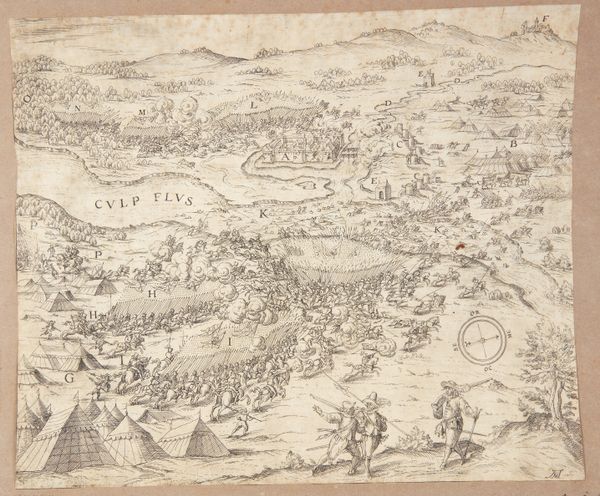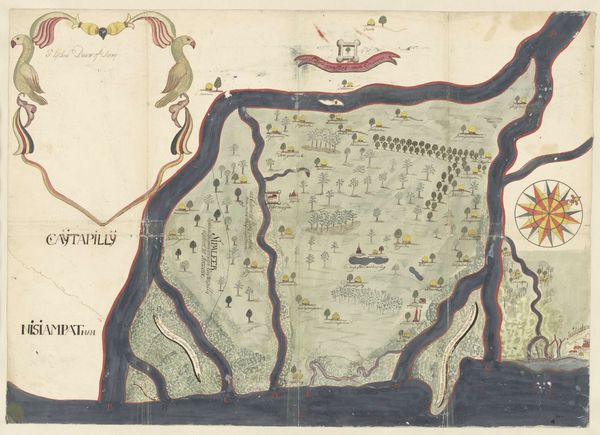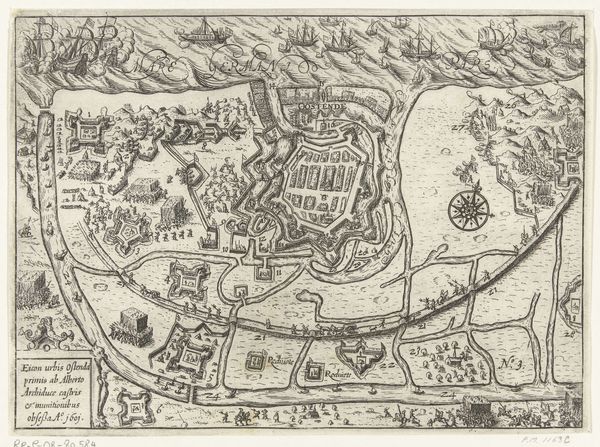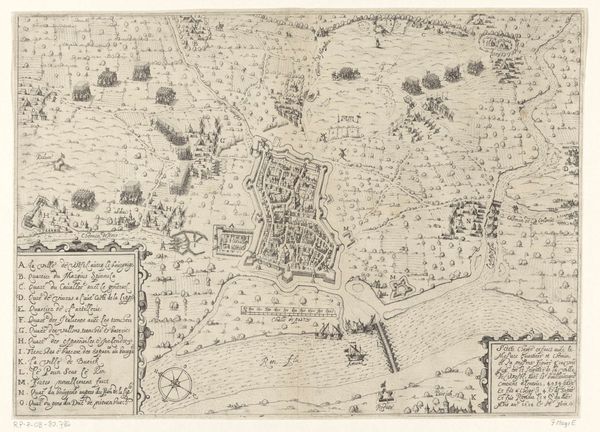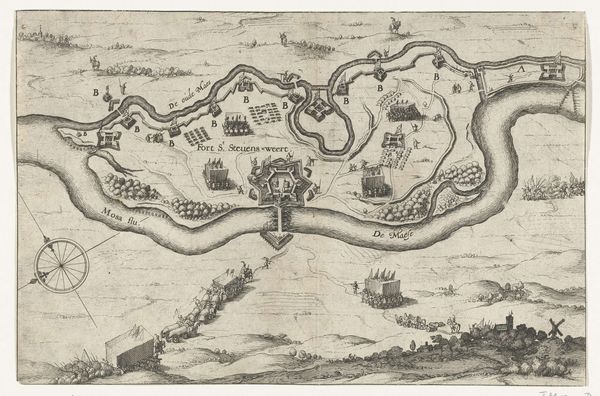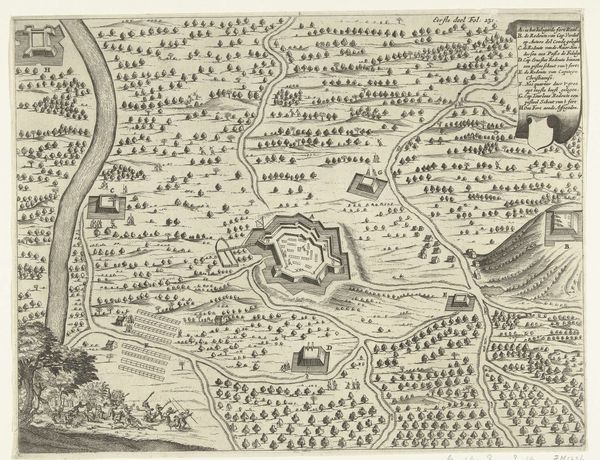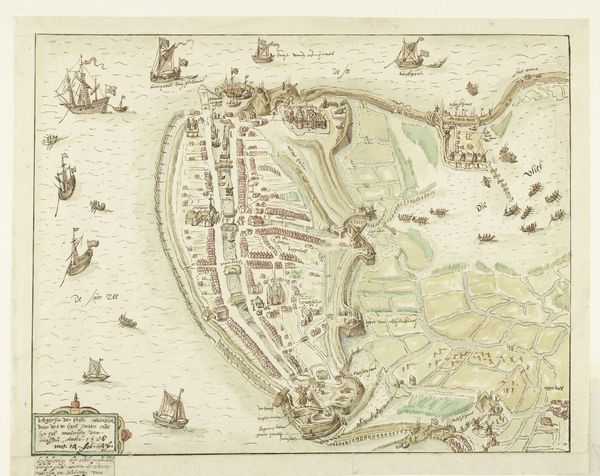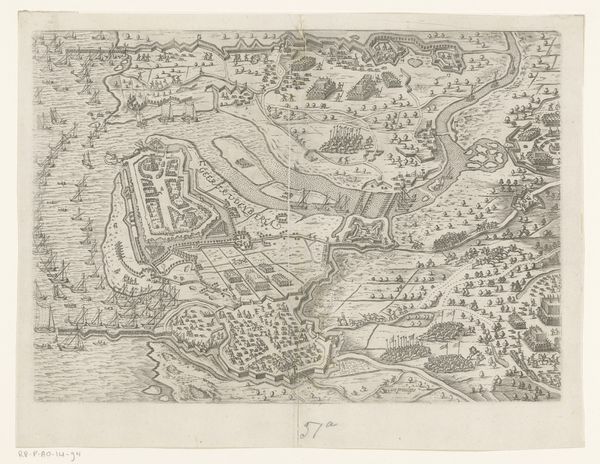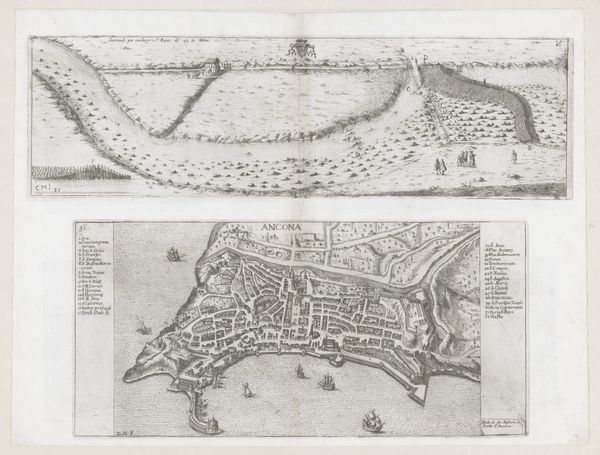
painting, watercolor
#
water colours
#
baroque
#
painting
#
asian-art
#
landscape
#
oil painting
#
watercolor
#
genre-painting
#
watercolor
Dimensions: support height 148.8 cm, support width 268.2 cm, sight size height 148 cm, sight size width 266.5 cm, frame height 176.7 cm, frame width 296 cm, frame thickness 12.5 cm
Copyright: Rijks Museum: Open Domain
Curator: Looking at this, my initial reaction is of muted tones, like a faded memory. The washes of green and brown create an atmosphere of aged exploration. Editor: Indeed. What we're seeing is a work from around 1617, an anonymous painting entitled "View of Ambon." It is rendered in watercolor. This image serves as both artwork and document, ripe for historical investigation. Curator: Absolutely. Immediately, I am struck by how the layout imposes a sort of ordered vision. We see land masses articulated through color. Is the use of watercolor, in particular, a statement about the perceived malleability, even subjugation, of the space depicted? Editor: An interesting interpretation. Consider how watercolor allowed for the detailed rendering of both geography and burgeoning settlements. We see a structured hierarchy imposed upon the landscape—the fort prominently placed—reflecting the dynamics of power at play in the early colonial period and, by extension, issues around forced labor, and the extraction of resources such as spices from Ambon. Curator: You bring up a crucial point. The fort as a locus of control... And what about the ships? They’re rendered as almost decorative, yet we know they were integral to the exploitation. Doesn’t this aestheticization obfuscate a darker reality? Editor: Undoubtedly. However, formally, they provide a rhythm, anchoring the eye and counterpointing the static land. What's compelling is the use of cartographic tools of that era, merging aesthetic sensibility with a display of knowledge and possession. Curator: And in its very essence, we have this juxtaposition: beauty versus the brutality of colonial expansion. So the visual harmony inherent to the art form is at direct odds with historical implications. This demands deeper investigation into the ethics of representation, doesn’t it? Editor: Precisely. This "View of Ambon" functions as a reminder: objects, no matter their beauty, must be viewed through an intersectional lens, taking into account historical, social, and political frameworks. Curator: So it becomes our duty to challenge dominant narratives in the face of visual allure. Thank you. Editor: Thank you for illuminating those hidden contexts within this historical scene.
Comments
rijksmuseum about 2 years ago
⋮
This is a view of the Mollucan island of Ambon with a portrait of its first Dutch governor, Frederik Houtman, at the lower right. At centre is the Portuguese Fort Victoria, which was seized by the Dutch East India Company in 1605 because of the lucrative clove production. Houtman initially maintained good contacts with the Ambonese chiefs, but the company later mounted ruthless ‘punitive expeditions’ to counter the sale of cloves to its rivals.
Join the conversation
Join millions of artists and users on Artera today and experience the ultimate creative platform.
